
BIOLOGICAL TRACE ELEMENT RESEARCH
Scope & Guideline
Advancing the Science of Trace Elements in Health and Environment
Introduction
Aims and Scopes
- Trace Element Analysis in Biological Systems:
The journal emphasizes the analysis of essential and toxic trace elements in biological samples (e.g., blood, urine, tissues) to understand their roles in health and disease. - Health Implications of Trace Elements:
Research articles frequently explore the associations between trace element levels and various health conditions, including metabolic disorders, cardiovascular diseases, and cancer. - Environmental Exposure Studies:
The journal publishes studies on environmental exposure to trace elements, evaluating risks associated with dietary intake, occupational exposure, and pollution. - Nanotechnology and Trace Elements:
There is a growing focus on the application of nanotechnology in delivering trace elements, assessing their bioavailability, and studying their therapeutic effects in various diseases. - Mechanistic Research on Trace Elements:
The journal supports mechanistic studies that investigate how trace elements influence biological processes at the molecular and cellular levels, including oxidative stress, inflammation, and apoptosis.
Trending and Emerging
- Interdisciplinary Approaches to Trace Elements:
There is an increasing trend towards interdisciplinary research that combines elements of nutrition, toxicology, and environmental science to provide a holistic view of trace elements' effects. - Trace Elements and Disease Mechanisms:
Emerging research is focusing on the specific mechanisms through which trace elements influence disease processes, including studies on gene expression, signaling pathways, and metabolic pathways. - Public Health Perspectives:
More studies are being published that evaluate the public health implications of trace elements, particularly in vulnerable populations and in the context of global health crises. - Selenium and Zinc in Disease Prevention:
Research on the roles of selenium and zinc in preventing various diseases, including their antioxidant properties and effects on immune function, has gained significant traction. - Bioavailability and Nanotechnology:
There is a growing interest in the bioavailability of trace elements and the use of nanotechnology to enhance their absorption and efficacy in therapeutic applications.
Declining or Waning
- Traditional Sources of Trace Elements:
Research focusing on conventional dietary sources of trace elements (e.g., fruits, vegetables) has decreased, with a shift towards more innovative sources such as nanotechnology and fortified foods. - Single Element Studies:
There is a waning interest in studies examining the effects of single trace elements in isolation, with a trend towards investigating the interactions and cumulative effects of multiple trace elements. - Occupational Exposure to Heavy Metals:
While still important, the frequency of publications specifically focused on occupational exposure to heavy metals has declined, possibly due to a broader focus on general environmental exposures. - Static Risk Assessments:
Static health risk assessments based on single exposure routes are becoming less common, as more dynamic and comprehensive risk assessment methodologies are being adopted.
Similar Journals
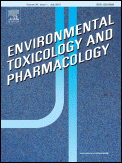
Environmental Toxicology and Pharmacology
Empowering research on environmental challenges.Environmental Toxicology and Pharmacology, published by Elsevier, is a leading journal dedicated to advancing our understanding of the effects of environmental pollutants on biological systems. With an ISSN of 1382-6689 and an E-ISSN of 1872-7077, this journal covers a wide range of studies related to toxicology, pharmacology, and environmental health. The journal is classified as Q2 in key categories such as Health, Toxicology and Mutagenesis and Medicine (miscellaneous), and sits impressively in Q1 for Toxicology, reflecting its strong impact in the field. As of 2023, it ranks #30 out of 133 in Toxicology and #40 out of 148 in Health, indicating its high relevance and contribution to research. While the journal is not currently open access, it remains a pivotal resource for researchers, professionals, and students seeking to explore the intricacies of environmental health effects. Its commitment to publishing high-quality peer-reviewed research positions it as a crucial platform for scientific dialogue and discovery.
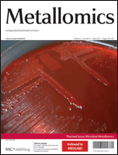
Metallomics
Innovating the Future of Metallomic StudiesMetallomics, published by Oxford University Press, is an esteemed journal with an ISSN of 1756-5901 and an E-ISSN of 1756-591X, specializing in the interdisciplinary field of metallomics—a critical area that examines the role of metals in biological systems. With a strong ranking in its categories, notably achieving Q1 status in Metals and Alloys and Q2 across fields such as Biochemistry, Biomaterials, Biophysics, and more, the journal serves as a pivotal resource for researchers, professionals, and students alike, facilitating cutting-edge discussions and discoveries. The journal's rigorous selection process ensures that only high-quality research is published, maintaining its reputation within the scholarly community. Despite lacking an Open Access option, its significant impact is reflected in its Scopus rankings, where it ranks 32nd in Materials Science and 21st in Chemistry (miscellaneous), emphasizing its influence and relevance. Metallomics invites submissions that contribute to the understanding of metal interactions in biological contexts, proposing new methodologies and insights that can shape future research in this dynamic and essential field.

JOURNAL OF TRACE ELEMENTS IN MEDICINE AND BIOLOGY
Advancing Knowledge on Trace Elements in Medicine and BiologyThe JOURNAL OF TRACE ELEMENTS IN MEDICINE AND BIOLOGY, published by Elsevier GmbH, stands as a leading platform for disseminating pivotal research in the interdisciplinary field that bridges biochemistry, inorganic chemistry, and molecular medicine. With an impact factor reflective of its high-quality submissions and significant contribution to the scientific community, this journal currently holds a Q2 ranking in Biochemistry and a Q1 ranking in Inorganic Chemistry, underlining its esteemed status among peers. Since its inception in 1995 and continuing through to 2024, the journal has fostered a dynamic discourse on the fundamental roles of trace elements in biological systems, incorporating studies that range from their biochemical functions to their impact on health and disease. Researchers, professionals, and students alike can access a wealth of knowledge, missing Open Access options notwithstanding, making it indispensable for those at the forefront of scientific investigation in medicine and biology.

JOURNAL OF MEDICINAL FOOD
Connecting Food, Health, and Scientific InquiryJOURNAL OF MEDICINAL FOOD, published by MARY ANN LIEBERT, INC, is an esteemed peer-reviewed journal focused on the intersection of nutrition, food science, and medicine. With an ISSN of 1096-620X and an E-ISSN of 1557-7600, this journal has been a vital resource for the dissemination of research findings since its inception in 1998 and continues to thrive through 2024. Positioned in the Q3 quartile for both Medicine (miscellaneous) and Nutrition and Dietetics, the journal ranks #120 out of 398 in its category, reflecting its significance within the scientific community. The Scope encompasses a wide range of topics related to the therapeutic potential of food and dietary interventions, making it a critical source of knowledge for researchers, healthcare professionals, and students alike. Although it does not offer Open Access options, the journal's comprehensive articles contribute to the ongoing discourse in nutritional medicine, facilitating informed decision-making and advancing academic inquiry.
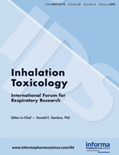
INHALATION TOXICOLOGY
Bridging Science and Health through Inhalation Studies.Inhalation Toxicology, published by Taylor & Francis Ltd, is a premier journal dedicated to advancing the field of toxicology with a particular focus on inhalation exposure and its impact on human health. Established in 1989, this journal provides a vital platform for original research, reviews, and case studies that explore the toxicological effects of inhaled substances, making it essential reading for researchers, health professionals, and regulatory scientists. With an Impact Factor that situates it in the Q3 category in both Health, Toxicology and Mutagenesis, the journal asserts its relevance within the scientific community, particularly emphasizing its contributions as indexed by Scopus rankings in related fields. Although it follows a traditional access model, the journal's commitment to delivering high-quality research continues to foster significant discussions and advancements in understanding inhalation toxicology. For those at the forefront of environmental science and pharmacology, Inhalation Toxicology is an indispensable resource for both current research and future innovations in the discipline.
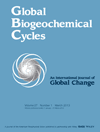
GLOBAL BIOGEOCHEMICAL CYCLES
Transforming insights into action for global sustainability.GLOBAL BIOGEOCHEMICAL CYCLES, published by the American Geophysical Union, is a leading journal in the field of geochemistry that has gained significant recognition since its inception in 1987. With an impressive impact factor and a Q1 ranking in multiple categories such as Atmospheric Science, Environmental Chemistry, and Global and Planetary Change, it serves as a crucial platform for the dissemination of high-quality research. This journal emphasizes interdisciplinary studies focusing on biogeochemical processes and their implications for global environmental change, attracting contributions from a diverse range of scientific communities. Researchers, professionals, and students engaged in atmospheric sciences, environmental chemistry, and planetary sciences will find invaluable insights and state-of-the-art methodologies within its pages. GLOBAL BIOGEOCHEMICAL CYCLES continues to advance our understanding of the Earth’s systems, thus holding a pivotal position in shaping future environmental policies and sustainability efforts.
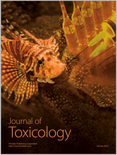
Journal of Toxicology
Advancing knowledge in toxicology and pharmacology.Journal of Toxicology, published by HINDAWI LTD, stands as a pivotal open-access journal in the fields of toxicology and pharmacology since its inception in 2009. With an ISSN of 1687-8191 and an E-ISSN of 1687-8205, this journal is dedicated to disseminating high-quality research that critically examines the effects of toxic substances on living organisms. Located in Egypt and operating from their London office, it aims to provide an extensive platform for researchers worldwide to share findings that can inform better practices in safety and regulation. As of 2023, it has achieved significant recognition, holding a Q3 ranking in both the pharmacology and toxicology categories, and is indexed in Scopus with noteworthy percentile rankings (Toxicology: 57th and Pharmacology: 55th). With a focus on innovative studies and emerging areas such as environmental toxicology, biomarker research, and therapeutic interventions, the Journal of Toxicology invites both experienced researchers and students to contribute, thereby enhancing the breadth and depth of toxicological knowledge for the global scientific community.
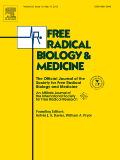
FREE RADICAL BIOLOGY AND MEDICINE
Unraveling the Impact of Free Radicals on Biological SystemsFREE RADICAL BIOLOGY AND MEDICINE, published by Elsevier Science Inc, is a premier journal dedicated to the field of biochemistry and medical physiology. With an ISSN of 0891-5849 and an E-ISSN of 1873-4596, this journal stands out with its impressive ranking in the 2023 category quartiles: Q1 in Biochemistry and Q1 in Physiology (medical). Specifically, it has achieved a remarkable position of 29th out of 438 in Biochemistry and 8th out of 113 in Physiology, placing it firmly in the 93rd percentile of its field, as per Scopus rankings. Since its inception in 1987, the journal has focused on advancing the understanding of free radicals and their role in biological processes, encompassing a wide range of topics from oxidative stress to therapeutic applications. Although it does not currently offer open access, the journal's rigorous peer-review process and impactful research ensure that it remains a valuable resource for researchers and professionals seeking to explore the intricate relationships between free radicals and health. The journal's headquarters are located at STE 800, 230 Park Ave, New York, NY 10169, reflecting its esteemed place within the scientific community and commitment to high-quality research.
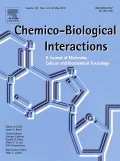
CHEMICO-BIOLOGICAL INTERACTIONS
Advancing Understanding in Pharmacology and ToxicologyCHEMICO-BIOLOGICAL INTERACTIONS is a premier journal published by Elsevier Ireland Ltd, dedicated to advancing the field of chemical and biological interactions since its inception in 1969. With a robust focus on pharmacology and toxicology, the journal holds a prestigious Q1 ranking in both Medicine (miscellaneous) and Toxicology, reflecting its significance in disseminating influential research. As part of the Scopus database, it ranks #21 out of 133 journals in Toxicology, positioning it in the 84th percentile and ensuring high visibility for cutting-edge studies. This scholarly platform serves as a crucial resource for researchers, professionals, and students who seek reliable and innovative findings at the intersection of chemistry and biology. While currently not open access, CHEMICO-BIOLOGICAL INTERACTIONS provides a comprehensive collection of articles that contribute to the ongoing dialogue in toxin research and its implications on medicinal chemistry, thereby fostering advancements in public health and safety.

ARCHIVES OF TOXICOLOGY
Pioneering Research for a Safer TomorrowARCHIVES OF TOXICOLOGY is a prestigious journal published by Springer Heidelberg, dedicated to advancing research in the field of toxicology and related disciplines. With a distinguished history dating back to 1930, this journal has continuously provided vital insights and groundbreaking studies, making it a cornerstone in the areas of health, toxicology, and medicine. Recognized for its high impact, it occupies a top-ranking position in Scopus, with remarkable quartile placements in 2023, categorizing it as Q1 in Health, Toxicology and Mutagenesis, and Q1 in Medicine (Miscellaneous). The journal highlights critical research and innovative methodologies, appealing to a diverse audience of researchers, professionals, and students committed to understanding the complexities of toxic substances and their implications for public health and environmental safety. The journal does not currently offer open access, allowing for a more traditional but rigorous peer-review process that ensures the quality and integrity of every published article. Join the global discourse in toxicological science with ARCHIVES OF TOXICOLOGY, where every contribution furthers the understanding of safety and toxicity in our world.